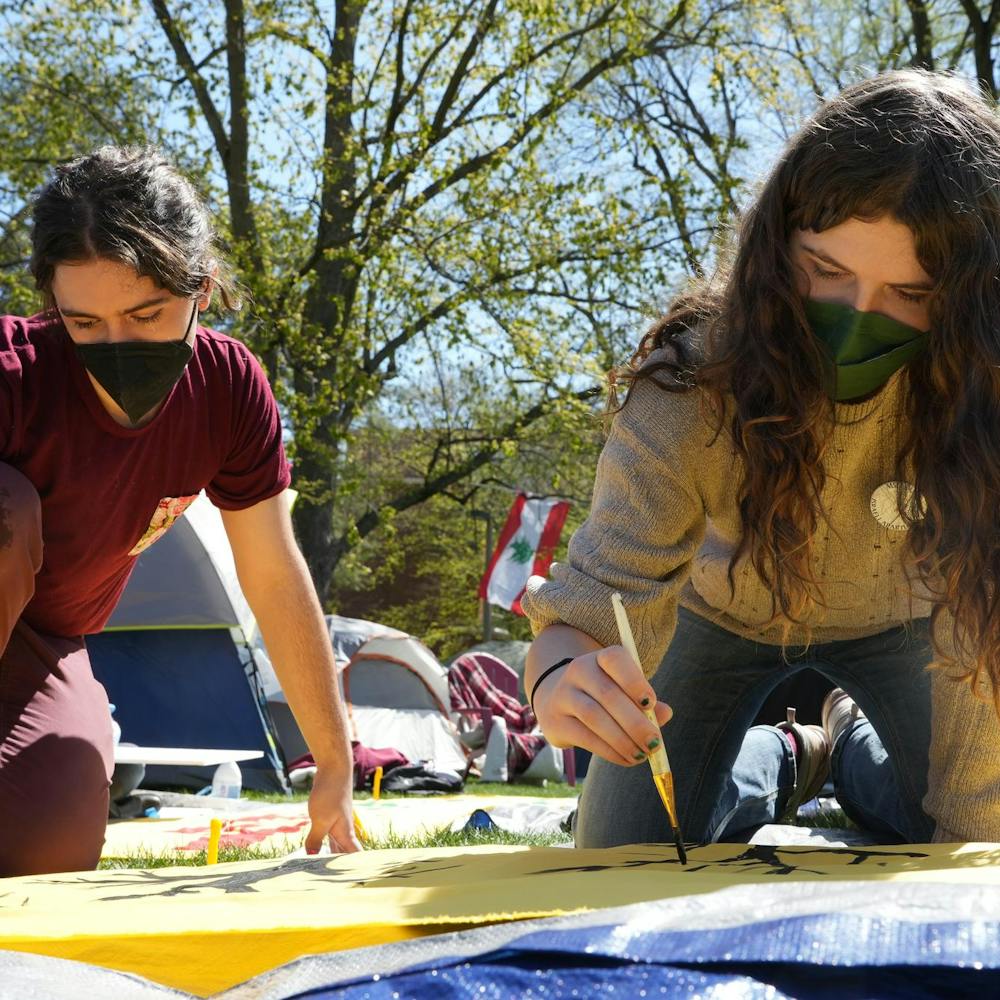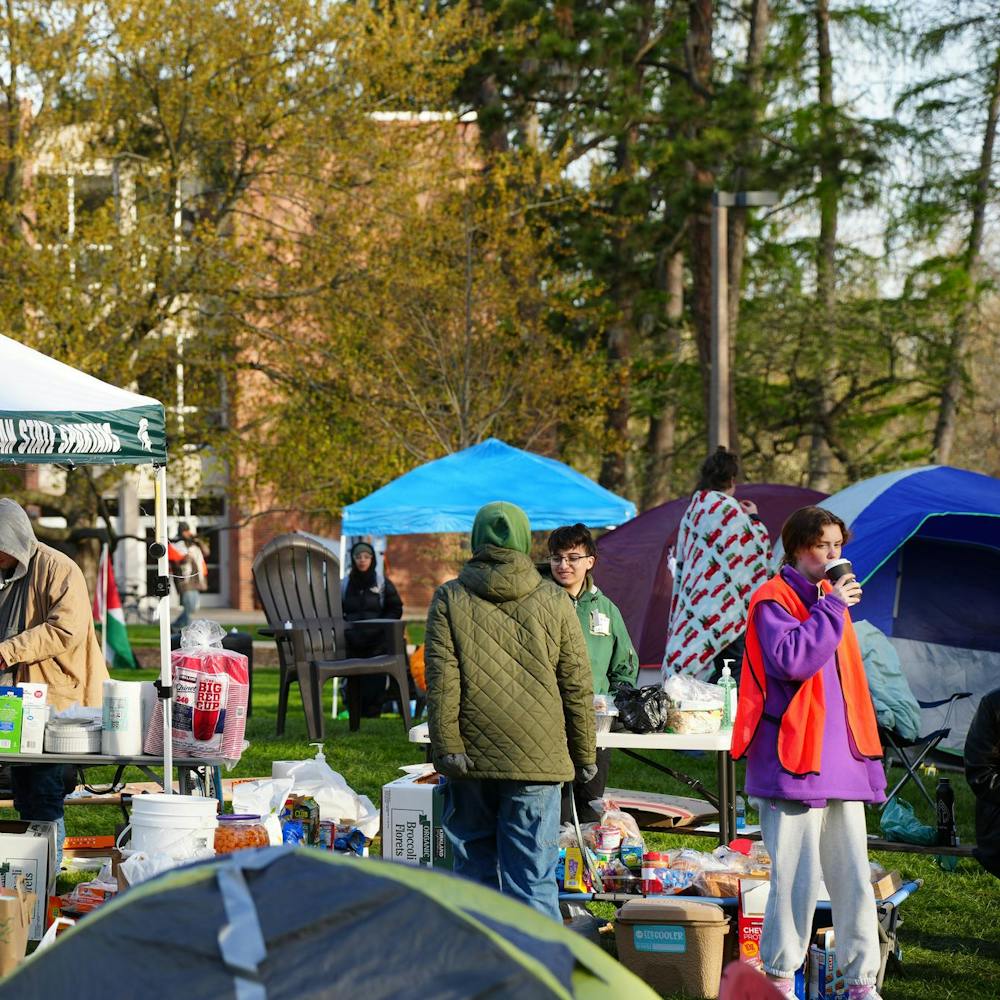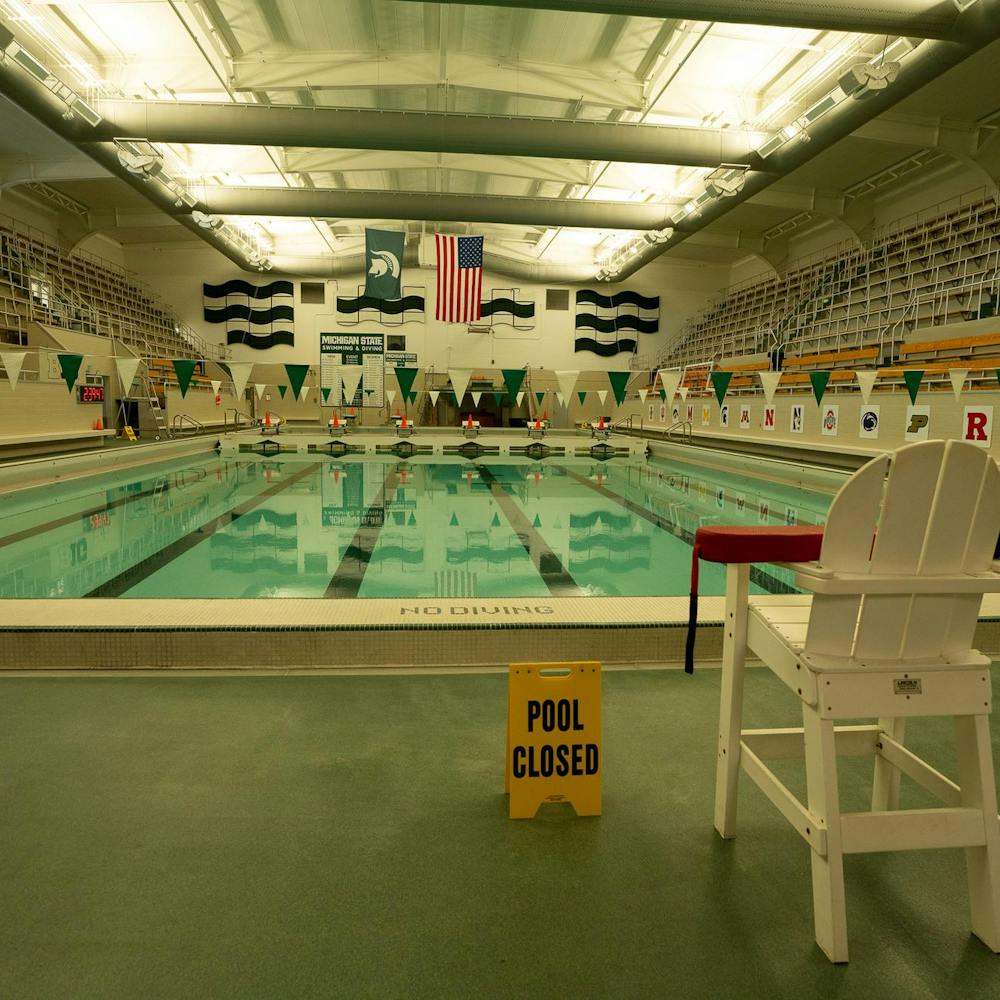Archaeologists and construction workers both spend a lot of time in the dirt, but as construction crews dig foot by foot, Chris Stawski would prefer to use a trowel and dig inch by inch.
Stawski, a doctoral anthropology student, and Beth Pruitt, an anthropology junior, have dedicated their summer to uncovering and recording pieces of campus history before they can be harmed by the construction projects happening near Mayo Hall on West Circle Drive.
“As the university does construction work in areas of campus where we believe there may be historic or prehistoric archaeological places, we try to look at those places before they begin construction,” said Lynne Goldstein, an anthropology social science professor.
“We’re not trying to stop the construction, but we’re trying to see if we can get in and look at it before it is destroyed.”
Goldstein said this summer’s campus archaeology is part of an ongoing university-funded project to better understand the university and its history. Construction crews are renovating Mayo Hall and digging up a large area of ground to put in new utility lines, Goldstein said.
Stawski said he overlaid the current campus map with the summer construction plans and a much older map of campus that illustrated the locations of the original Faculty Row houses to see how the locations of interest lined up.
“We wanted to go in there first (because) we know that’s where the first faculty housing was located,” Goldstein said.
Stawski said they dug over a period of six weeks in the West Circle excavation sites before construction began in mid-May.
“We found the remnants of one building (which) may have been a washhouse for clothing or a shower house, we don’t know exactly,” Goldstein said. “When they were doing construction work more recently, after we found the building, we found some wooden pipe, representing the first plumbing on campus that we know of.”
Stawski said he now spends his days outside monitoring the construction crews, making sure they’re not digging up anything that could be historically significant.
“When they’re digging I try to keep a keen eye out, if they hit something I’ll tell them to stop and jump in the pit,” he said.
“Everyday I’m out there taking notes, drawing maps, recording everything, even if it’s not historically significant, just to get a sense of the construction process. Then I’ll load up my backpack with artifacts and bring them back (to Pruitt).”
Stawski said most of the artifacts that have been uncovered have been construction materials like brick, glass, nails and concrete. Occasionally other items, like pieces of ceramic artifacts, are found, he said.
There are 90 brown paper bags containing about 500 pieces of brick in the lab, she said.
“I always get giddy when there’s writing on (an artifact) like a company name and a date,” Pruitt said.
While Stawski spends most of his time in the dirt, Pruitt said she spends her days in the lab.
“I just come in and pick up where I left off with the inventory,” Pruitt said. “(I) go through the bags one by one and Stawski will come in every once in a while with some artifacts, some new ones to wash and to label.”
Pruitt said she deals with the different types of artifacts one at a time. First she might wash, weigh, measure and categorize all of the brick artifacts, then all of the glass, then all of the nails, she said.
Artifacts found have ranged from 10 years old to more than 100 years old, Stawski said, like some bottles from the early 1900s that were found. He said it’s amazing how the artifacts are scattered because of all of the construction that has taken place over the years.
“(MSU) students are walking on history, and they may not realize it,” Stawski said.
Support student media!
Please consider donating to The State News and help fund the future of journalism.
“I don’t think students really think of that too much — how much history is here and how many past Spartans there have been,” Pruitt said.
Discussion
Share and discuss “Students dig up MSU's past” on social media.






